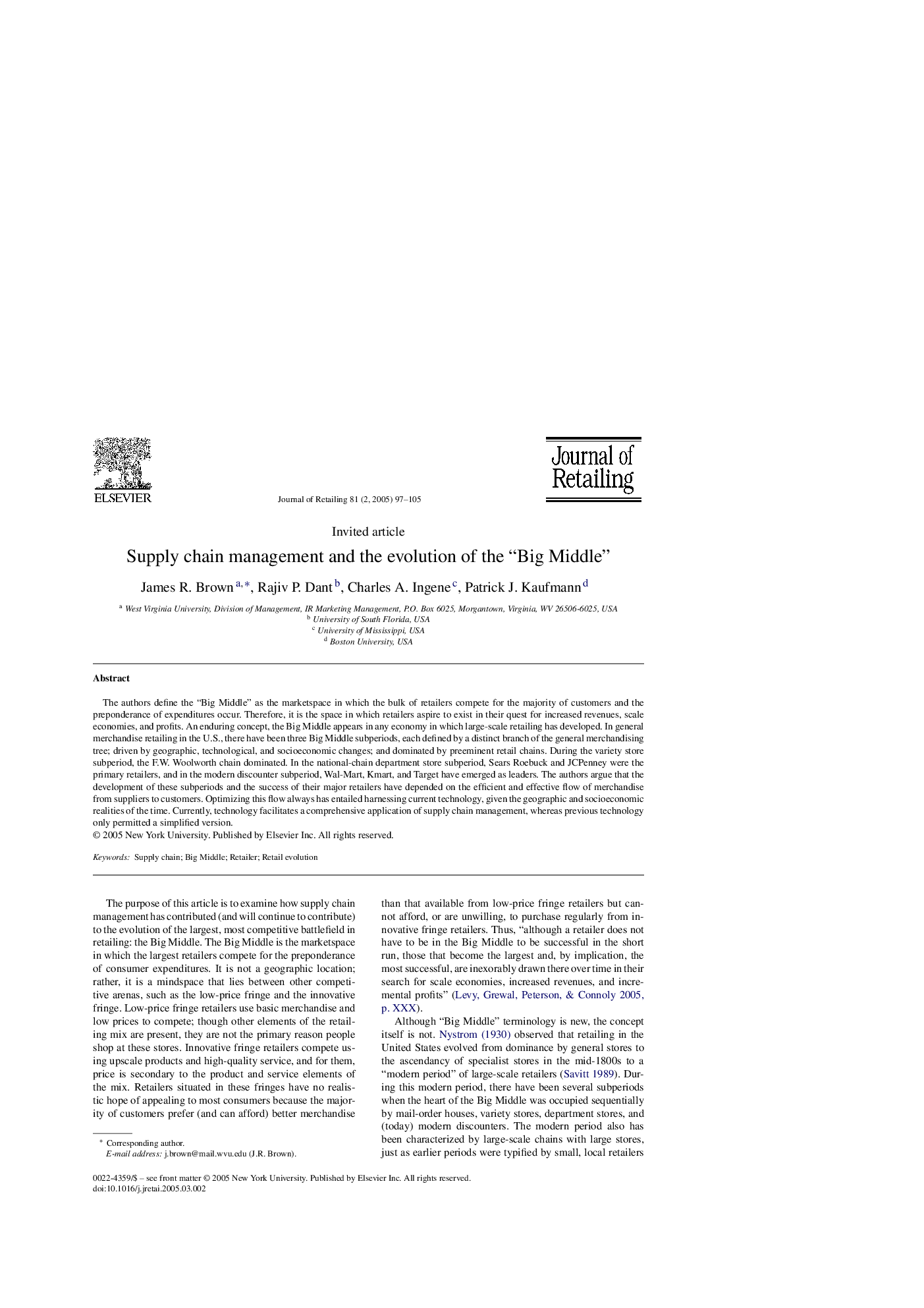| Article ID | Journal | Published Year | Pages | File Type |
|---|---|---|---|---|
| 10439004 | Journal of Retailing | 2005 | 9 Pages |
Abstract
The authors define the “Big Middle” as the marketspace in which the bulk of retailers compete for the majority of customers and the preponderance of expenditures occur. Therefore, it is the space in which retailers aspire to exist in their quest for increased revenues, scale economies, and profits. An enduring concept, the Big Middle appears in any economy in which large-scale retailing has developed. In general merchandise retailing in the U.S., there have been three Big Middle subperiods, each defined by a distinct branch of the general merchandising tree; driven by geographic, technological, and socioeconomic changes; and dominated by preeminent retail chains. During the variety store subperiod, the F.W. Woolworth chain dominated. In the national-chain department store subperiod, Sears Roebuck and JCPenney were the primary retailers, and in the modern discounter subperiod, Wal-Mart, Kmart, and Target have emerged as leaders. The authors argue that the development of these subperiods and the success of their major retailers have depended on the efficient and effective flow of merchandise from suppliers to customers. Optimizing this flow always has entailed harnessing current technology, given the geographic and socioeconomic realities of the time. Currently, technology facilitates a comprehensive application of supply chain management, whereas previous technology only permitted a simplified version.
Keywords
Related Topics
Social Sciences and Humanities
Business, Management and Accounting
Marketing
Authors
James R. Brown, Rajiv P. Dant, Charles A. Ingene, Patrick J. Kaufmann,
